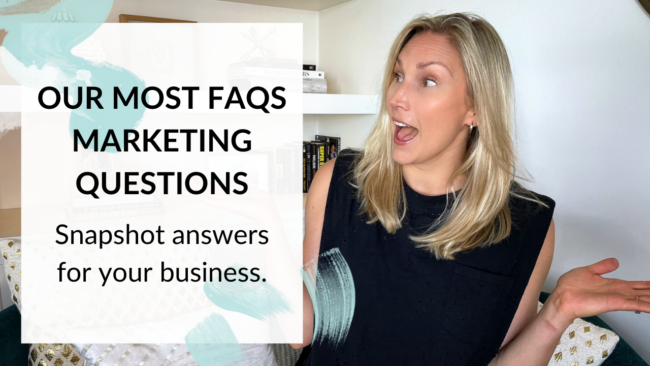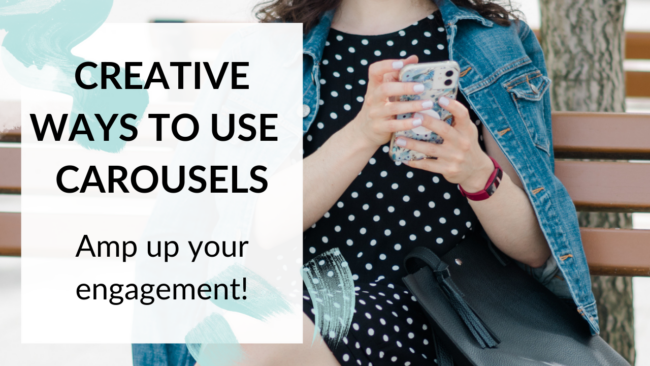Marketing Goals 101: Know your ‘why’ for better results
The first question we always ask our clients is: what’s the goal? It might seem obvious, but you’d be surprised at how often businesses pump out content, throw massive events, or take on other marketing initiatives just for the heck of it.
“Everyone else is doing it” isn’t a good enough reason to pour money into a new initiative, and not all initiatives NEED to equal a sale. But they do need to have ROI attached, whether that be brand awareness, loyalty, monetary, or just attracting more eyeballs to your business.
Knowing your ‘why’ will also help you narrow in on the copywriting and call-to-action that will get you there. Let’s talk through different goals for your marketing and how to achieve them.
*TLDR? Watch the video!*
Marketing Goals 101
- Traffic: Basically, sending people to a website, landing page, or events page. Getting your audience to land in these places means they’re actually reading what you have to say. Increased traffic also increases your SEO.
- Brand awareness: This is how we introduce your brand to the world. It’s difficult to track ROI when it comes to brand awareness but that’s totally okay. The story behind what you do is just as important.
- Lead capture: This is the first step in the sales process — the moment where your audience says, “Okay, tell me more.” Remember, you wouldn’t marry someone on a first date — so why expect your audience to buy as soon as they meet you?
- Lead nurturing: This is what happens after you capture a lead — the relationship-building with your business and its audience. Keep in mind, it takes an average 11 impressions of a brand for someone to make a purchase. At this point we want to share bits and pieces of our brand with a potential customer, and tweak as needed. Did they click through on that ad you sent them? Great, keep doing what you’re doing. Are you getting no traction at all? Maybe it’s time to pivot.
- Education: This is SO important in trust-building. People are more likely to engage with a business that they’re confident knows what it’s talking about. It makes the purchase feel secure and solid. So as a business, it’s your job to equip your audience with the knowledge they need to make that jump.
- Engagement: There is so much power behind shares, saves, comments, and direct messages. Not only will you build a loyal audience that will boost your message to other people in their network, but social media platforms will start to favour you in the algorithm. The goal here is ultimately relationship-building.
- Re-engagement: This is when we re-open communication with people who have already purchased from you (or have thought about it). Whether it’s asking them for feedback on their experience, a product review, or shooting them an email when they abandon their cart — it’s all about keeping your brand top of mind. This gives you the opportunity to fix any blips your customer experienced along the way and build long-term loyalty.
- Purchase or Hire (Conversion): Of course, a customer making a purchase or hiring your business is the ultimate goal, but everything you’ve done until this point matters! When it comes time to ask your customer to buy, we want to make sure the call to action is appropriate to their customer journey.
Marketing goals are never one-size-fits-all. While some businesses entice their audience to make a $3 coffee purchase every day, others try to sell something major like a car or a dream home. This is why your goal is so important. Your marketing strategy will COMPLETELY shift depending on your goal and the customer journey that’s needed to get there.
So start with your goal and work backward. Need help finding your ‘why’? Reach out to us here.
For more marketing and branding tips and tutorials, visit our blog page.



